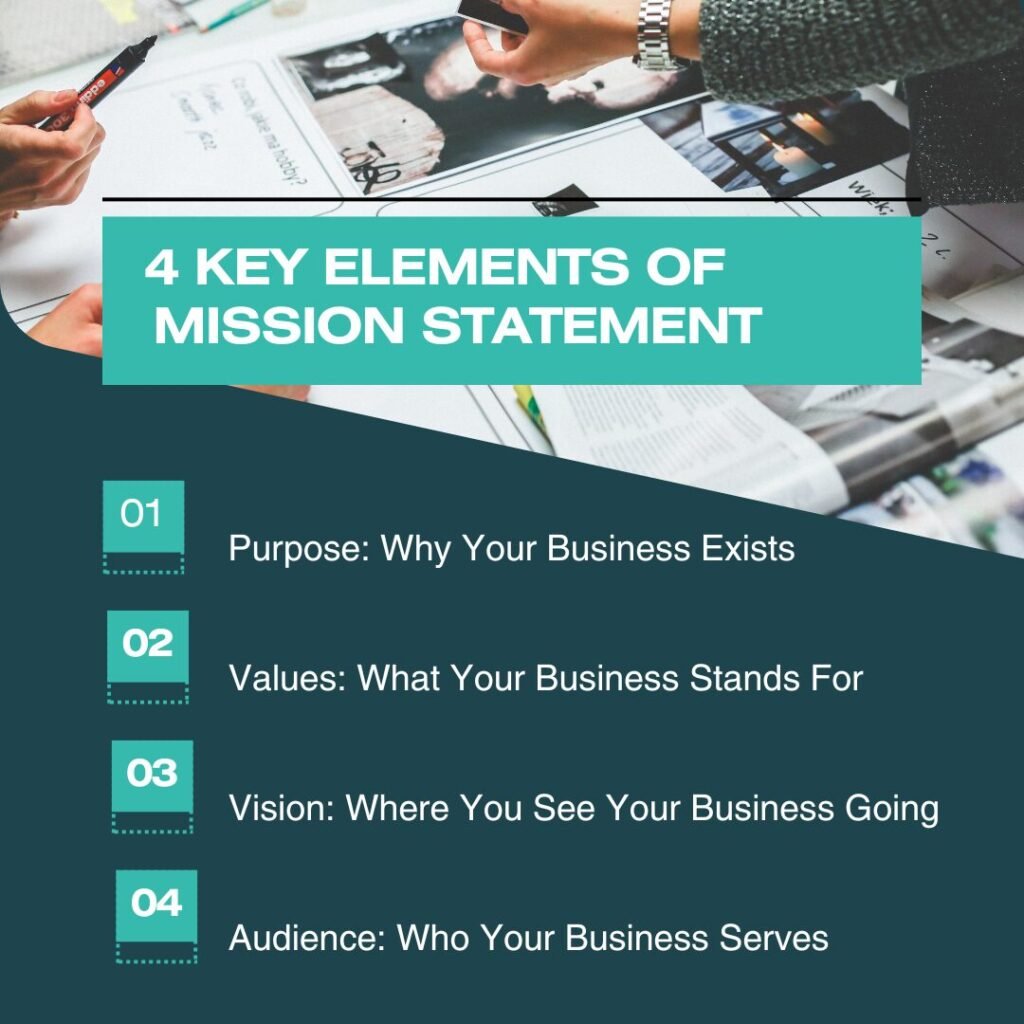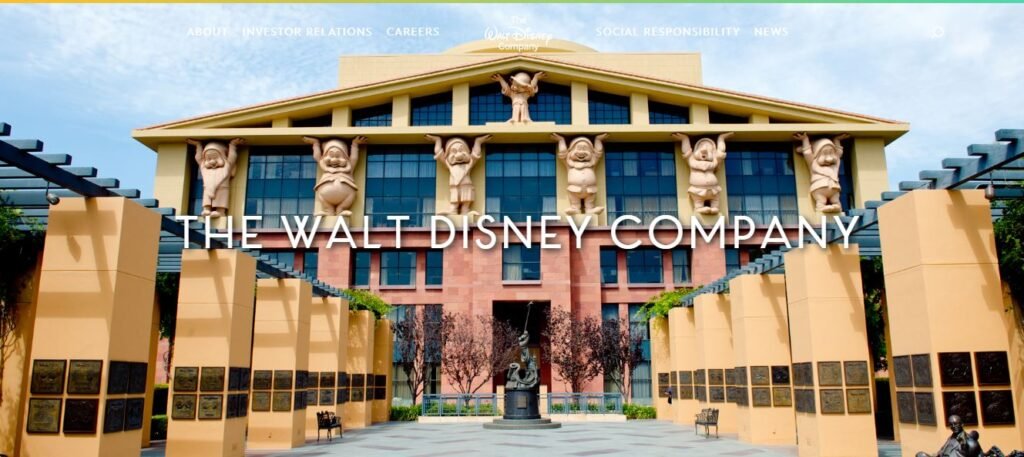Whether you’re starting fresh or managing a well-known brand, a mission statement guides your actions. It aligns every decision with your larger goals. It shows employees, customers, and partners what you stand for and why you do what you do.
But writing a mission statement that truly captures what your company stands for isn’t easy. It takes some real thought and a deep understanding of your business’s purpose and vision. A strong mission statement doesn’t just stay within your company—it reaches out and connects with people, building loyalty and trust.
Think about why you keep choosing the same brands or podcasts—because they offer more than just a product; they tell a story that feels personal and meaningful. That’s the power of a good mission statement.
So, how do you create one that really speaks to what your company is about and connects with your audience? Let’s take a look at some of the best mission statements out there and see how you can write your own.
- What Is a Mission Statement?
- How to Write an Effective Mission Statement
- How to Use Your Mission Statement Effectively
- The Impact of a Strong Mission Statement on Company Culture
- Examples of Inspiring Mission Statements
- Case Studies: Companies with Powerful Mission Statements
- Practical Exercises to Help You Craft Your Mission Statement
- How mission is different from a vision statement
- The Benefits of a Well-Crafted Mission Statement
- Common Mistakes to Avoid When Writing a Mission Statement
- Conclusion
- FAQs
What Is a Mission Statement?
A mission statement is a brief statement that explains what a company is all about. It clearly states the company’s purpose, its main goals, and the core values that drive its actions. Essentially, it answers two key questions: “Why does our company exist?” and “What do we want to accomplish?”
A mission statement acts like a roadmap for the organization. It lays out the main objectives and the guiding principles that shape the company’s direction.
Core Elements of a Mission Statement
A strong mission statement doesn’t just appear out of nowhere. It’s crafted with careful thought about your business’s purpose, values, vision, and audience.

Purpose: Why Your Business Exists
The purpose is the heart of your mission statement. It answers, “Why does your business exist?” This is about more than just making money. It’s about the positive impact you want to have on the world.
Values: What Your Business Stands For
Values are the principles that guide your company’s actions and decisions. They show what’s important to you and shape your company’s culture. Examples include innovation, customer focus, integrity, or sustainability.
Vision: Where You See Your Business Going
The vision is about the future. It describes where you want your business to go. While the mission statement explains what your business does and why, the vision statement paints a picture of where you hope to be in the future.
Audience: Who Your Business Serves
Consider who you are serving. Your mission statement should address your audience—whether they are customers, employees, or the community.
How to Write an Effective Mission Statement
Writing a mission statement can feel challenging, but breaking it into simple steps makes it easier.
Start with Your Purpose
Define clearly why your business exists. What problem are you solving? What need are you meeting? This is the foundation of your mission statement.
Identify Core Values
List the core values that drive your business. These principles shape your company’s culture and guide decisions.
Define Your Long-Term Vision
Think about where you want your business to go in the future. While the mission statement focuses on the present, a vision of the future can help make your statement both relevant and aspirational.
Keep It Clear and Concise
Your mission statement should be easy to understand. Avoid using jargon. Aim for one or two sentences that capture the essence of your business.
Use Inspirational and Motivational Language
Make your mission statement inspiring for both your team and your customers. Use motivating language that resonates with your audience.
Reflect on Your Audience
Consider who will read your mission statement. Ensure it speaks to them and reflects their needs and goals.
How to Involve Your Team in Creating a Mission Statement
Creating a mission statement is more effective when you involve your team. Their input can make the statement more authentic and supported.
Engaging Employees in the Process
Start by involving your employees. Ask them what they think the company’s purpose is and what values matter most to them.
Gathering Input and Feedback
Collect feedback from different departments and levels within your organization. This approach ensures that the mission statement resonates with everyone in the company.
Ensuring Buy-In and Ownership
When employees contribute to the mission statement, they’re more likely to feel connected to it. This involvement helps create a sense of ownership and commitment to the company’s purpose.
Revise and Update Your Mission Statement
Your mission statement isn’t permanent. As your business grows and evolves, you may need to revise it. Revisit your mission statement if your business undergoes major changes, such as entering new markets, launching new products, or experiencing leadership shifts. These changes might require adjustments to your mission statement to better reflect your new direction.
To update your mission statement, start by reflecting on your current purpose, values, and vision. Involve your team in this process to ensure the updated statement aligns with your current goals. Once the revision is complete, make sure to communicate the changes to all stakeholders, including employees, customers, and partners. This helps everyone stay aligned with your revised goals and direction.
How to Use Your Mission Statement Effectively
Once you have your mission statement, use it in these key ways:
Incorporate It into Your Marketing and Branding
Make your mission statement a key part of your marketing and branding. Use it to shape your messaging and ensure all communications reflect your core purpose and values.
Communicate It to Employees Regularly
Keep your team engaged with the mission statement. Share it often through internal communications, meetings, and training sessions.
Review and Revise It Periodically
As your business grows, your mission statement may need updates. Regularly review it to ensure it still matches your company’s goals and values.
Use It as a Foundation for Your Business Strategy
Let your mission statement guide your business strategy. Ensure that every decision, whether big or small, aligns with your mission.
The Impact of a Strong Mission Statement on Company Culture

A strong mission statement can significantly influence your company’s culture.
It provides employees with a clear sense of purpose, helping them see how their individual work contributes to the company’s larger goals. This clarity fosters a sense of belonging and connection to the company.
When employees align with the company’s mission, they are more engaged and motivated. This alignment often results in higher productivity and greater job satisfaction.
Moreover, a mission statement that reflects your core values helps ensure that everyone in the company is working toward the same objectives, guided by shared principles. This consistency reinforces a cohesive and focused company culture.
Examples of Inspiring Mission Statements
Sometimes, the best way to craft your mission statement is to see how others have done it. Here are a few examples from successful companies:
- Google: “To organize the world’s information and make it universally accessible and useful.”
- Tesla: “To accelerate the world’s transition to sustainable energy.”
- Nike: “To bring inspiration and innovation to every athlete* in the world.”
- Starbucks: “To inspire and nurture the human spirit – one person, one cup, and one neighborhood at a time.”
- Patagonia: “We’re in business to save our home planet.”
Case Studies: Companies with Powerful Mission Statements
Examining companies with impactful mission statements can reveal how these statements contribute to their success. Let’s delve into how specific mission statements have shaped the success of major companies.
Case Study 1: Apple

Mission Statement: Apple’s mission is “to bring the best user experience to customers through innovative hardware, software, and services.”
Impact and Analysis:
Apple’s mission statement emphasizes innovation and user experience. This focus has been a driving force behind the company’s success and market leadership. Here’s how:
- Innovation as a Core Value:
- Apple consistently invests heavily in research and development (R&D). In 2023, Apple spent over $27 billion on R&D, highlighting its commitment to innovation.
- The result is a series of groundbreaking products, such as the iPhone, iPad, and Apple Watch, which have set new standards in technology. For instance, the iPhone revolutionized the smartphone industry with its user-friendly interface and seamless integration of hardware and software.
- User Experience Focus:
- Apple’s mission to enhance user experience has led to a reputation for high-quality, reliable products. According to a 2023 survey by J.D. Power, Apple ranks highest in customer satisfaction among smartphone users.
- The integration of Apple’s ecosystem—where hardware, software, and services work harmoniously—exemplifies this commitment. Features like iCloud, Apple Music, and the seamless connectivity between devices enhance the overall user experience.
- Brand Reputation:
- Apple’s focus on delivering exceptional user experiences has bolstered its brand reputation. In 2023, Apple was valued at $2.8 trillion, making it one of the most valuable companies globally. This high valuation reflects consumer trust and brand loyalty, which are directly linked to its mission statement.
Case Study 2: Amazon

Mission Statement: Amazon’s mission is “to be Earth’s most customer-centric company, where customers can find and discover anything they might want to buy online, and endeavors to offer its customers the lowest possible prices.”
Impact and Analysis:
Amazon’s mission statement emphasizes two core principles: customer obsession and operational excellence. This focus has been central to its rapid scaling and success. Here’s how:
- Customer Obsession:
- Amazon’s commitment to being customer-centric is evident in its diverse range of services and products. According to a 2023 survey by Temkin Group, Amazon consistently ranks as one of the top companies in terms of customer satisfaction and loyalty.
- The company’s emphasis on convenience is reflected in innovations such as Amazon Prime, which offers fast shipping, exclusive content, and various other benefits. As of 2024, Amazon Prime has over 200 million members worldwide, showcasing its success in enhancing customer satisfaction.
- Operational Excellence:
- Amazon’s operational strategies, including efficient logistics and supply chain management, contribute to its competitive pricing and fast delivery. The company operates more than 175 fulfillment centers globally, allowing for rapid order processing and shipping.
- Advanced technologies, such as automated warehouses and AI-driven logistics, enhance operational efficiency. For example, Amazon Robotics helps streamline warehouse operations, increasing productivity and reducing costs.
- Scalability and Market Reach:
- Amazon’s focus on customer needs and operational efficiency has facilitated its rapid expansion. The company’s revenue grew to $586 billion in 2023, making it one of the largest e-commerce platforms globally.
- The wide variety of products and services available on Amazon’s platform, from books to electronics to groceries, aligns with its mission to offer “anything customers might want to buy online.”
Case Study 3: The Walt Disney Company

Mission Statement: Disney’s mission is “to be one of the world’s leading producers and providers of entertainment and information. Using our portfolio of brands to differentiate our content, services, and consumer products, we seek to develop the most creative, innovative, and profitable entertainment experiences and products.”
Impact and Analysis:
Disney’s mission statement focuses on providing entertainment and inspiration. This focus has been key to its success and leadership in the entertainment industry. Here’s how:
- Creativity and Innovation:
- Disney’s commitment to creativity is evident in its wide range of content and experiences. The company’s iconic films, such as “The Lion King,” “Frozen,” and “Avatar,” are products of its dedication to innovative storytelling and high-quality production.
- Disney’s acquisition of major brands like Pixar, Marvel, Lucasfilm, and 21st Century Fox has expanded its creative portfolio. For example, Marvel Studios’ success with blockbuster films like “Avengers: Endgame” showcases Disney’s ability to produce compelling and profitable entertainment.
- Entertainment and Inspiration:
- Disney’s mission to inspire is reflected in its theme parks, such as Disneyland and Disney World. These parks are designed to create magical experiences for guests, bringing Disney’s stories and characters to life. In 2023, Disney’s parks and resorts segment generated $35 billion in revenue, demonstrating their significant impact on the company’s success.
- Disney also uses its platform to promote positive messages and inclusivity. For example, the film “Encanto” highlights Colombian culture and family values, resonating with diverse audiences and reinforcing Disney’s role as a source of inspiration.
- Brand Strength and Market Leadership:
- Disney’s focus on quality and innovation has helped it maintain a leading position in the entertainment industry. In 2023, Disney was valued at $320 billion, reflecting its strong brand and successful business model.
- The company’s diverse portfolio, which includes TV networks (like ABC and ESPN), streaming services (like Disney+), and consumer products, underscores its ability to provide a wide range of entertainment experiences, aligning with its mission.
Practical Exercises to Help You Craft Your Mission Statement
Ready to craft your mission statement? Try these practical exercises to guide you through the process:
Workshop Activity: Brainstorming Purpose and Values
Gather Your Team:
Organize a session with key team members. Aim for diverse perspectives from different departments and levels.
Discuss Purpose and Values:
Start by asking questions like: Why does our company exist? What problems are we solving? What values are important to us?
Encourage open discussion and note down all ideas.
Prioritize and Summarize:
Review the ideas and identify common themes. Prioritize the core values and purpose that resonate most with the group.
Writing Exercise: Crafting a Draft Mission Statement
Draft the Statement:
Using the key points from your brainstorming session, draft a mission statement. Aim for clarity and simplicity. Focus on capturing the essence of your purpose and values in one or two sentences.
Align with Goals:
Ensure that the draft aligns with your company’s overall goals and strategic direction. The statement should reflect both what you do and why you do it.
Be Concise:
Keep the language straightforward and impactful. Avoid jargon and ensure the statement is easy to understand.
Feedback Session: Reviewing and Refining Your Statement
Share the Draft:
Present the draft mission statement to your team and other stakeholders. Ask for their honest feedback.
Gather Insights:
Collect feedback on how well the statement reflects the company’s purpose and values. Look for suggestions on clarity and impact.
Refine and Finalize:
Use the feedback to make revisions. Refine the statement to ensure it is both compelling and representative of your company’s mission.
How mission is different from a vision statement
It’s common to mix up mission and vision statements, but they serve distinct roles.
Understanding the Key Differences
A mission statement is about the present. It explains what your company does and why it exists. A vision statement, however, looks to the future. It describes where you want your company to go and what you hope to achieve in the long term.
How They Complement Each Other
Though they have different focuses, mission and vision statements work together. The mission statement defines your current purpose, while the vision statement outlines your future goals. Together, they give a full view of your company’s direction and ambitions.
Examples of Vision Statements
- Microsoft: “To empower every person and every organization on the planet to achieve more.”
- Oxfam: “A just world without poverty.”
- IKEA: “To create a better everyday life for the many people.”
The Benefits of a Well-Crafted Mission Statement
A strong mission statement isn’t just for show; it offers tangible benefits to your business.
Alignment and Focus for Your Team
A clear mission statement helps everyone in your organization stay on the same page. It acts as a guide, making sure that all team members are working toward shared goals.
Guiding Decision-Making Processes
When tough choices arise, your mission statement helps you decide what’s best. It acts as a filter, ensuring that your actions align with your core purpose and values.
Enhancing Brand Identity and Image
Your mission statement is key to shaping your brand’s identity. It tells people what your brand stands for and helps you connect more deeply with your audience.
Building Trust with Stakeholders
A clear mission statement builds trust with stakeholders. It shows them what your business stands for, making them more likely to support and believe in your company.
Common Mistakes to Avoid When Writing a Mission Statement
Writing a mission statement can be tricky. Here are some common pitfalls to avoid:
Being Too Vague or Generic
A mission statement that is too vague or generic won’t connect with anyone. Skip the buzzwords and clichés. Focus on what makes your business truly unique.
Focusing Too Much on Profits
Profit is important, but it shouldn’t be the main focus of your mission statement. Instead, highlight the value you offer to customers and the positive impact you want to make.
Ignoring the Company’s Values
Your mission statement should reflect your core values. If it doesn’t, it might feel empty or out of touch with your company’s culture.
Making It Too Long or Complex
Keep your mission statement clear and concise. Avoid making it too long or complex, as this can weaken its impact.
Conclusion
Creating a mission statement is a key part of defining what your business is all about. It’s not just about listing what you do; it’s about understanding why you do it and who you do it for. A well-crafted mission statement will inspire you and your team, and it will make sure everyone is working towards the same goals.
By following the steps and exercises in this guide, you can develop a mission statement that clearly shows your business’s purpose and helps you achieve your goals.
FAQs
How do I write my mission statement?
Start by defining your business’s purpose—why it exists and what problems it solves. Identify your core values, which guide your actions and decisions. Draft a clear and concise statement that reflects these elements, and refine it based on feedback from your team.
What are the three parts of a mission statement?
A mission statement typically includes:
Purpose: Why your business exists.
Values: The principles that guide your company’s actions.
Vision: The direction you aim to move towards.
What comes first, mission or vision?
You usually start with a vision statement, which outlines where you want your business to go in the future. The mission statement follows, detailing what your business does and why it exists in the present.
What is a brand mission?
A brand mission is similar to a mission statement but focuses specifically on the core purpose and values of your brand. It explains why your brand exists and what it stands for in a way that resonates with your audience.
What comes after a mission statement?
After crafting your mission statement, focus on implementing it throughout your business. Use it to guide your decisions, shape your strategies, and communicate with your team and customers. Regularly review and update it as your business evolves.






